
A coast guard or coastguard is a maritime security organization of a particular country. The term embraces wide range of responsibilities in different countries, from being a heavily armed military force with customs and security duties to being a volunteer organization tasked with search and rescue without law enforcement authority. In most countries, a typical coast guard's functions are distinct from those of the navy and the transit police, while in certain countries has similarities to both.

Water police, also called harbor patrols, port police, marine/maritime police, nautical patrols, bay constables,river police, or maritime law enforcement are police officers, usually a department of a larger police organization, who patrol in water craft. Their patrol areas may be coastal sea waters, rivers, estuaries, harbors, lakes, canals or a combination of these.
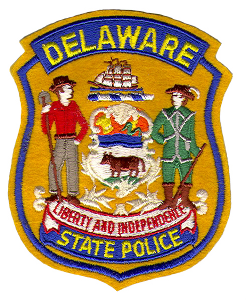
The Delaware State Police (DSP) is a division of the Delaware Department of Public Safety and Homeland Security and is responsible for traffic regulation and law enforcement across the state of Delaware, especially in areas underserved by local police departments. The DSP is headquartered in the capital Dover, Delaware.

The Washington State Patrol (WSP) is the state police agency for the U.S. state of Washington. Organized as the Washington State Highway Patrol in 1921, it was renamed and reconstituted in 1933. The agency is charged with the protection of the Governor of Washington and the grounds of the Washington State Capitol; security aboard the vessels and terminals of the Washington State Ferries; law enforcement on interstate and state highways in Washington; and providing specialized support to local law enforcement including laboratory forensic services, mobile field forces during periods of civil unrest or disaster, and tactical teams. The State Fire Marshal's Office, responsible for operation of the Washington State Fire Training Academy and for certain aspects of civil defense mobilization, is a component office of the Washington State Patrol, and the State Patrol is the managing agency of the Washington Fusion Center, which coordinates anti-terrorist and anti-organized crime activities within Washington.

The Maryland State Police (MSP), officially the Maryland Department of State Police (MDSP), is the official state police force of the U.S. state of Maryland. The Maryland State Police is headquartered at 1201 Reisterstown Road in the Pikesville CDP in unincorporated Baltimore County.

The Border Patrol Tactical Unit (BORTAC) is the tactical unit of the United States Border Patrol. In 2007, BORTAC was placed under the command of the newly formed Special Operations Group (SOG) together with the Border Patrol Search, Trauma, and Rescue Unit (BORSTAR).

The Michigan Department of Natural Resources (DNR) is the agency of the state of Michigan charged with maintaining natural resources such as state parks, state forests, and recreation areas. It is governed by a director appointed by the Governor and accepted by the Natural Resources Commission. Currently the Director is Daniel Eichinger. The DNR has about 1,400 permanent employees, and over 1,600 seasonal employees.
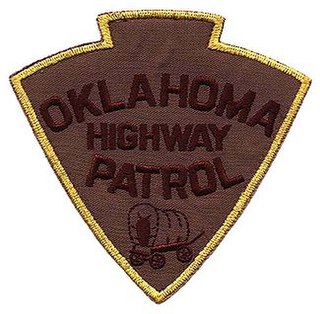
The Oklahoma Highway Patrol (OHP) is a major state law enforcement agency of the government of Oklahoma. A division of the Oklahoma Department of Public Safety, the OHP has traffic enforcement jurisdiction throughout the state. OHP was legislatively created on July 1, 1937, due to the growing problem of motor vehicle collisions, the expansion of highway systems, and the increase in criminal activities.

The South Carolina Department of Natural Resources (DNR) is a South Carolina state agency charged with regulating hunting, fishing, boating, duck stamp orders, and the conservation efforts of the state government.
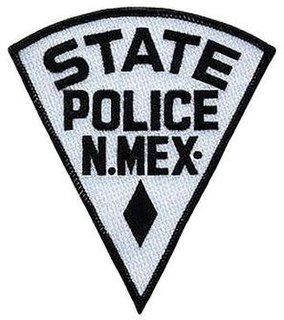
The New Mexico State Police is the state police agency for New Mexico, which has jurisdiction anywhere in the state. It was created to protect the lives, property and constitutional rights of people in New Mexico. The State Police is a division within the New Mexico Department of Public Safety.
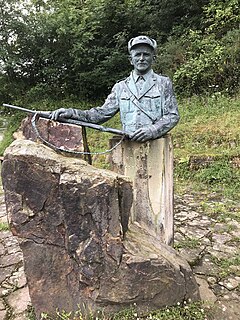
A conservation officer is a law enforcement officer who protects wildlife and the environment. A conservation officer may also be referred to as an environmental technician or technologist, game warden, forest ranger, forest watcher, forest guard, forester, gamekeeper, investigator, wilderness officer, wildlife officer, or wildlife trooper.
The Alabama Department of Conservation and Natural Resources (ADCNR) is the state agency responsible for the conservation and management of Alabama's natural resources including state parks, state lands, wildlife and aquatic resources. ADCNR also issues hunting and fishing licenses for the state. The department promotes wise stewardship and enjoyment of the state's natural resources through five divisions: Marine Resources, State Lands, State Parks and Wildlife and Freshwater Fisheries. Supporting those divisions are seven support sections: Accounting, Diversity and Recruiting, Engineering, Information and Education, Information Technology, Legal, and Personnel and Payroll.
The Maryland Department of Natural Resources (DNR) is a government agency in the state of Maryland charged with maintaining natural resources including state parks, public lands, state forests, state waterways, wildlife and recreation areas. Its headquarters are in Annapolis.

The Louisiana Department of Wildlife & Fisheries – Enforcement Division (LDWF) is the fish & game regulatory agency of Louisiana. It has jurisdiction anywhere in the state, and in state territorial waters. The agency enforces both state and federal laws dealing with hunting, fishing, and boating safety. The agency also enforces criminal laws in rural areas including DWI enforcement both on highways and waterways. Most of the Department's Wildlife Agents also carry Federal law enforcement commissions issued from the United States Department of the Interior - U.S. Fish and Wildlife Service, and United States Department of Commerce - U.S. National Marine Fisheries Service (NMFS). These federal commissions allow these state officers to enforce federal migratory waterfowl laws and federal marine fisheries laws in state and federal waters off the coast of Louisiana. Besides their traditional role as a "game warden", Louisiana Wildlife Enforcement Agents also have a number of other responsibilities, including conducting board of health inspections on some portions of the state's commercial fishing industry. Agents are trained in and conduct numerous search and rescue operations, both in remote land areas and on the state's waterways. Agents ensure that hunters, anglers, boaters, dealers, breeders, farmers, and transporters are in compliance with regulations governing equipment, quotas, licenses, and registrations. Agents also assist other State departments and law enforcement agencies in the coordination of educational and professional endeavors, as well as national and state emergency alerts by the Federal Office of Emergency Preparedness. In addition, agents perform search and rescue missions alone or in conjunction with other local, state, and federal agencies.
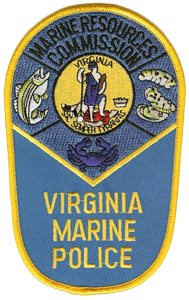
The Virginia Marine Police is the law enforcement division of the Virginia Marine Resources Commission, an agency of the Commonwealth of Virginia, United States.
Michigan Conservation Officers also known as Michigan DNR Law Enforcement Division are conservation officers who are the enforcement branch of the Michigan Department of Natural Resources. Their primary duty is to enforce the environmental laws in the State of Michigan. Michigan Conservation Officers are fully commissioned peace officers and are empowered to enforce all the laws of the state of Michigan.
Frolic was a Maryland State Oyster Police Force schooner, part of the force established to enforce state conservation laws designed to protect Maryland's oyster resources when out of state, often New England, dredgers began destroying reefs in the Chesapeake Bay. Later local opposition to licenses turned to open "warfare" in the "oyster wars" when a fleet of state vessels fought "oyster pirates" in armed conflicts. Frolic was built in 1884. The schooner was assigned to Queen Anne's County, Maryland in 1902 and later to the Commission's Second District which included Eastern Bay, and the Miles and Wye Rivers.

Governor R. M. McLane, was a steamboat built in 1884 that served the state of Maryland as an enforcement and survey vessel.

Julia Hamilton was a Maryland State Oyster Police Force schooner, part of the force established to enforce state conservation laws designed to protect Maryland's oyster resources when out of state, often New England, dredgers began destroying reefs in the Chesapeake Bay. Later local opposition to licenses turned to open "warfare" in the "oyster wars" when a fleet of state vessels fought "oyster pirates" in armed conflicts.
Bessie Jones was a Maryland State Oyster Police Force schooner, part of the force established to enforce state conservation laws designed to protect Maryland's oyster resources when out of state, often New England, dredgers began destroying reefs in the Chesapeake Bay. Later local opposition to licenses turned to open "warfare" in the "oyster wars" when a fleet of state vessels fought "oyster pirates" in armed conflicts. Bessie Jones was assigned to St. Mary's County, Maryland in 1902 and later to the Hill's Point, Maryland areas.

















